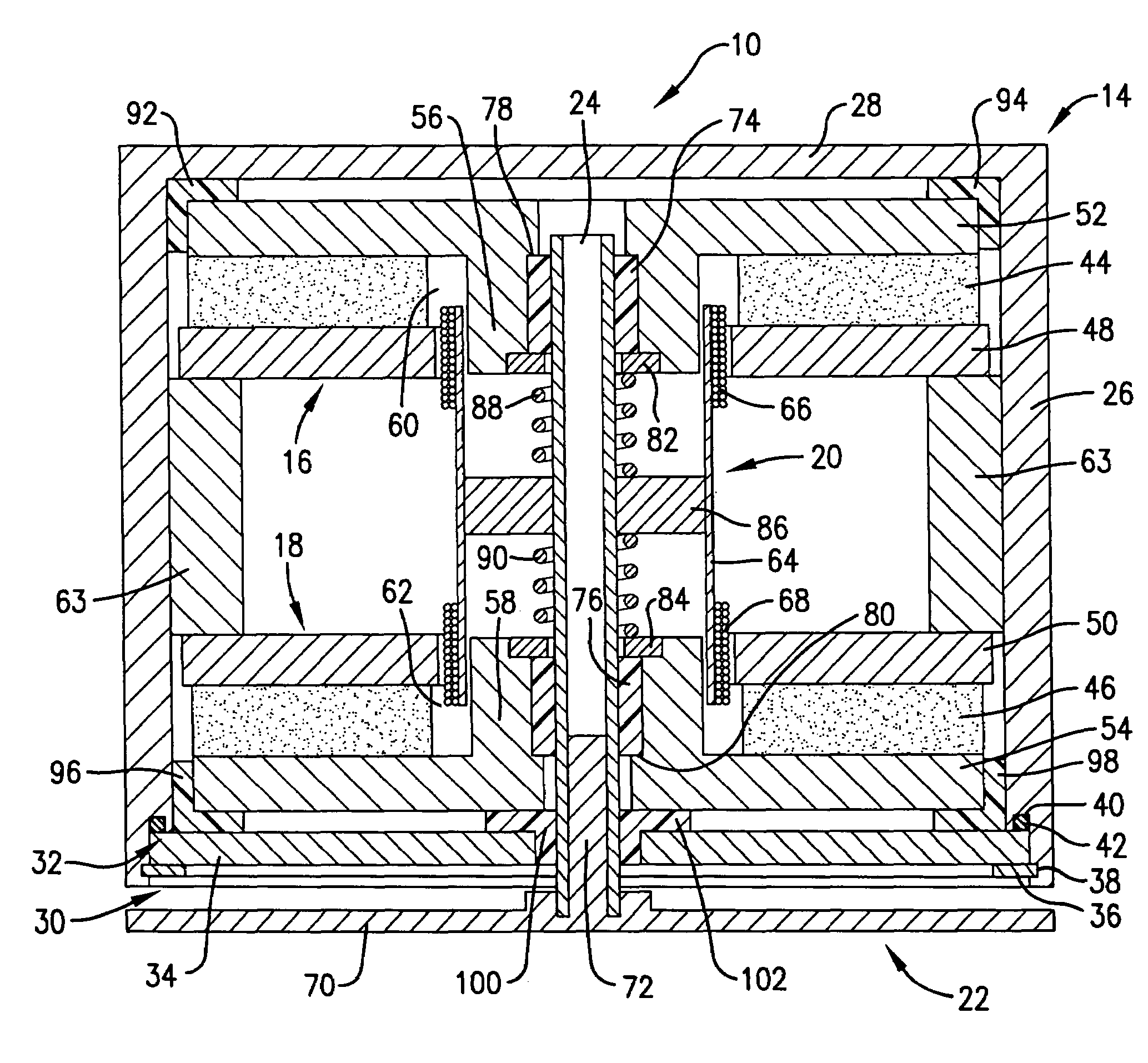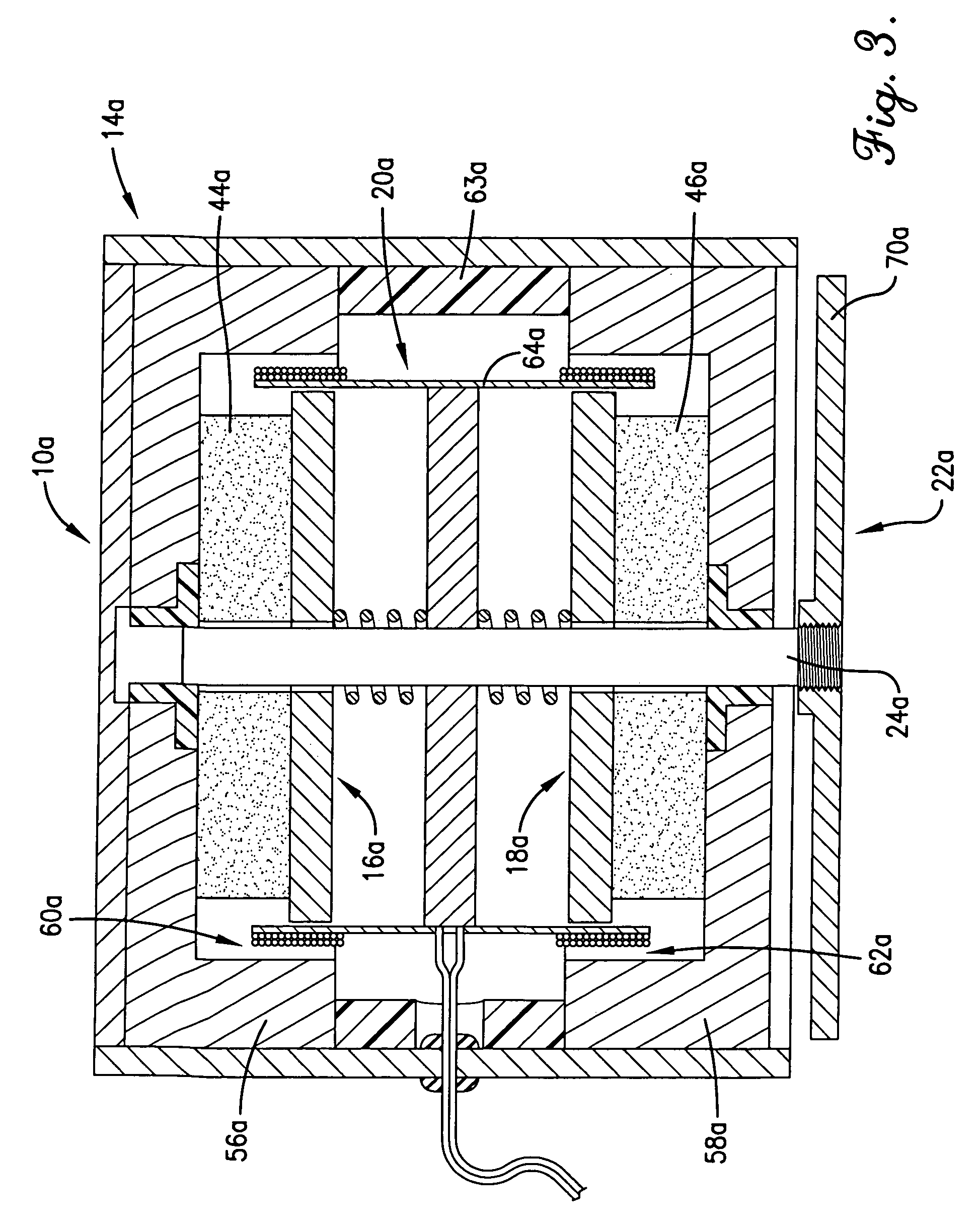Sound transducer for solid surfaces
a sound transducer and solid surface technology, applied in the direction of electrical transducers, deaf-aid sets, transducer details, etc., can solve the problems of difficulty in mounting speakers in a listening area without interfering with windows, doors, columns, etc., and achieve the effect of transferring more acoustical energy, reproducing more sound, and consistent and uniform frequency respons
- Summary
- Abstract
- Description
- Claims
- Application Information
AI Technical Summary
Benefits of technology
Problems solved by technology
Method used
Image
Examples
Embodiment Construction
[0022]A sound transducer 10 constructed in accordance with a preferred embodiment of the present invention is shown in FIG. 1 attached to a solid surface 12 such as a wall of a room or other listening area. As explained in more detail below, the sound transducer 10 imparts acoustical energy directly to the solid surface 12 to vibrate the solid surface 12 in accordance with an applied audio signal to thereby produce sound.
[0023]The solid surface 12 may be constructed of any material or combination of materials such as drywall, glass, fiberglass, wood, or even metal; however, extremely thick materials such as concrete are not preferred because they do not transfer acoustical energy well enough to produce much usable sound. The sound transducer 10 is preferably mounted to an area of the solid surface 12 that is not directly attached to another more rigid surface. For example, when attached to a wall consisting of drywall supported by wooden studs, the sound transducer 10 is preferably ...
PUM
 Login to View More
Login to View More Abstract
Description
Claims
Application Information
 Login to View More
Login to View More - R&D
- Intellectual Property
- Life Sciences
- Materials
- Tech Scout
- Unparalleled Data Quality
- Higher Quality Content
- 60% Fewer Hallucinations
Browse by: Latest US Patents, China's latest patents, Technical Efficacy Thesaurus, Application Domain, Technology Topic, Popular Technical Reports.
© 2025 PatSnap. All rights reserved.Legal|Privacy policy|Modern Slavery Act Transparency Statement|Sitemap|About US| Contact US: help@patsnap.com



